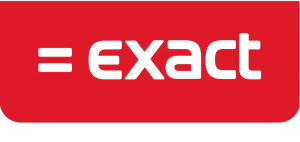 Your first priority as a business is to make sure you are around tomorrow. We already know that those companies who are web 2.0 savvy outperform those who aren’t. But things just moved up a gear. Google and Facebook are rolling out significant changes to their models – changes that bring web 3.0 one step closer.
Your first priority as a business is to make sure you are around tomorrow. We already know that those companies who are web 2.0 savvy outperform those who aren’t. But things just moved up a gear. Google and Facebook are rolling out significant changes to their models – changes that bring web 3.0 one step closer.
If your business relies on traditional advertising in social networks, getting found in Google, or still thinks with a mass marketing headset, it’s time to rethink and rebuild.
A quick refresh on web 3.0: content and context
Around a year ago I wrote a primer on web 3.0 and semantics for exactly this moment. The heart of the matter is:
The goal of the semantic web – web 3.0 – is to create more context around everything that we publish online. So that content search & delivery can have greater meaning, relevancy & value for the people you are targeting.
So the ‘purpose’ of web 3.0 is to deliver relevant and valuable content – as defined by the person who is on the receiving end. It’s worth thinking about that for a moment. Web 3.0 doesn’t deliver what you want to be delivered. It delivers what your prospect or customer most wants.
So. What are Google and Facebook up to? Stop thinking of them as just ‘channels’ for a sec. Remember they are just businesses – with customers to keep happy. To do that they innovate as if their future depends on it. But in the process, they are also setting the ground-rules for your marketing and advertising online.
Google turns up the volume on semantic search
As reported by everyone from the Wall St. Journal to Search Engine Journal, Google is making ‘drastic changes’ to its algorithm. Previously, when someone searched, Google looked primarily at your keyword strategy and quality of content then spat out results. Now, Google will also cross-check you with a huge database of ‘people, places and things’ it has built over the past two years. It will consider stuff like:
- How much quality content have you created?
- How much relevant content have your produced?
- How much of your content is shared and who shares it?
- Who are you connected to online? Influencers? Trusted sources?
- In what channels are you connected with your target?
And much more besides. Then, and only then, will it decide where to place you in search engines. As Amit Singhal, a top Google Search Executive said, Google Search will now start looking at your business much more like “how humans understand the world”.
In other words, Google is now looking at your positioning in your industry – your bigger corporate story. It will check the way you communicate online across every channel. That’s how it will decide whether your content is the most relevant to deliver.
Why? It simply wants to deliver quality better content so it has happier customers. So what about Facebook?
Facebook is pushing brands from advertising to publishing stories
Facebook identified a business challenge: It needs advertisers to keep making money. But its customers are unhappy with being bombarded with ‘mass’ advertising. And it needs happy customers otherwise it will lose its effectiveness as an advertising platform.
Thanks to its own behavioural database, Facebook did know that some content was valued by customers, and decided to focus there. I’m not going to go into detail on what’s changed in Facebook as a result, or the full marketing impacts. Instead, here’s the bottom line:
Every brand will now have a timeline, just like a real-life person. All advertising will now begin life as a single post on a brand’s timeline. You will then get the opportunity to further promote and distribute that content within Facebook – but only if it gets engagement from fans first.
In other words, Facebook is now looking at your specific proposition – the value you add to the people you are targeting. If you add value Facebook will help you promote your content further. And that’s how it will keep it’s customers happy.
So what should you do about it – today?
Google and Facebook know that web 3.0 isn’t just about technology. Web 3.0 looks at the your business the way a human would. Its purpose is to deliver only the most valuable stuff to the right person, in the right channel – so everyone gets the best bang for their buck. It’s just sound business strategy. Here’s where I suggest you should start:
1. Context: take a critical look at your positioning online
Are you telling the big corporate story? Are you using the right channels for the right story? Check your Paid, Owned and Earned media mix. Think about all your stakeholders: suppliers, alliances, influencers, prospects, customers. Assess if they’re all catered for in distinct channels with distinct content. If not, fix it. Make sure you are optimised. Google will love you for it – and understand exactly who you are.
2. Content: develop targeted propositions for individual channels
Make sure you understand the basics of content marketing. Focus on personas and funnels. Start developing targeted goals not mass goals. Then create great content for the right people in each social channel. Tie up campaign content with supporting content that you publish continually. Facebook will like it, your customers will like it – and you will be happier because there won’t be half as much wasteful advertising.
Welcome to web 3.0: more targeted, more value and less waste!
Note: if you are particularly worried about the switch from advertising to content marketing, check out this post on managing your advertising and social mix I wrote a couple of years ago. It’s still relevant.














